GPU
GPU (Graphics Processing Unit)


Gefion – Denmark's new AI supercomputer, launched in October 2024 – is powered by 1,528 H100's, a GPU developed by Nvidia. This object, the Graphics Processing Unit, is a key element that, arguably, paves the way for Denmark's sovereignty and heavy ploughing in the AI world. Beyond all the sparkles, this photo shows the importance of the GPU object not only as a technical matter, but also a political and powerful element of today's landscape.
Since the boom of Large Language Models, Nvidia's graphic cards and GPUs have become somewhat familiar and mainstream. The GPU powerhouse, however, has a long history that predates their central position in generative AI, including the stable diffusion ecosystem: casual and professional gaming, cryptocurrencies mining, and just the right processing for n-dimensional matrices that translate pixels and words into latent space and viceversa.
What is a GPU?
A graphics processing unit (GPU) is an electronic circuit focused on processing images in computer graphics. Originally designed for early videogames, like arcades, this specialised hardware performs calculations for generating graphics in 2D and later for 3D. While most computational systems have a Central Processing Unit (CPU), the generation of images, for example, 3D polygons, requires a different set of mathematical calculations. GPUs gather instructions for video processing, light, 3D objects, textures, etc. The range of GPUs is vast, from small and cheap processors integrated into phones and smaller devices, to state of the art graphic cards piled in data centres to calculate massive language models.
What is the network that sustains the GPU?
From the earth to the latent space
Like many other circuits, GPUs require a very advance production process, that starts with mineral mining for both common and rare minerals (silicon, gold, hafnium, tantalum, palladium, copper, boron, cobalt, tungsten, etc). Their life-cycle and supply chain locate GPUs into a material network with the same issues of other chips and circuits: conflict minerals, labour rights, by-products of manufacturing and distribution, and waste. When training or generating AI responses, the GPU is the object that consumes the most energy in relation to other computational components. A home-user commercially available GPU like the GeForce RTX 5090 can consume 575 watts, almost double than a CPU in the same category. Industry GPUs like the A100 use a similar amount of energy, with the caveat that they are usually managed in massive data centres. Allegedly, the training of GPT4 used 25,000 of the latter, for around 100 days (i.e., approximately 1 gigawatt, or 100 million led bulbs). This places GPUs in a highly material network that is for the most part invisible, yet enacted with every prompt, LoRA training, and generation request.
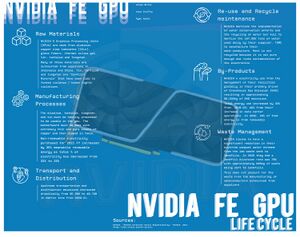
Perhaps the most important part of the GPU , is that this object is a, if not the, translation piece: most of the calculations to and from 'human-readable' objects, like a painting, a photograph or a piece of text in pixel space, into an n-number of matrices, vectors, and coordinates, or latent space, are made possible by the GPU. In many ways, the GPU is a transition object, a door into and out of a, sometimes grey-boxed, space.
The GPU cultural landscape and its recursive publics
It is also a mundane object, historically used by gamers, thus owning much of its history and design to the gaming culture. Indeed, the development of computer games fuelled the design and development of the current GPU capabilities. In own our study, we use an Nvidia RTX 3060ti super, bought originally for gaming purposes. When talking about current generative AI, populated by major tech players and trillion-valued companies and corporations, we want to stress the overlapping history of digital cultures, like gaming and gamers, that shape this object.
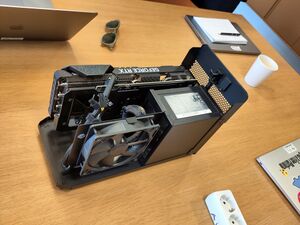
Being a material and mundane object also allows for paths towards autonomy. While our GPU was originally used for gaming, it opened a door for detaching from Big Tech industry players. With some tuning and self-managed software, GPUs can process queries on open, mid-size and large, language models, including stable diffusion. That is, we can generate our own images, or train LoRA's, without depending on chatGPT, Copilot, or similar offers. Indeed, plenty of enthusiast follow this path, running, tweaking, branching, and reimagining open source models thanks to GPUs. CivitAI is a great example of a growing universe of models, with different implementations of autonomy: from niche communities of visual culture working on representation, communities actively developing prohibited, censored, fetishised, and specifically pornographic images. CivitAI hosts alternative models for image generation responding to specific cultural needs, like a specific manga style or anime character, greatly detached from the interests of Silicon Valley's AI blueprints or nation's AI sovereignty imaginaries.
A horde of graphic cards
The means of production of these communities, alongside with collaboratively labelled data, is the GPU. AI Horde (also known as Stable Horde), for example, is a distributed cluster of 'workers', i.e. GPUs, that use open models, including many community-generated ones from CivitAI. The volunteer and crowd-sourced project acts as a hub that directs image generation requests from different interfaces (such as ArtBot, Mastodon, or other platforms) towards individual GPU workers in the network. As part of our project, our GPU is (sometimes) connected to this network, offering image generation (using selected models) to any request from the interfaces (websites, APIs, etc).
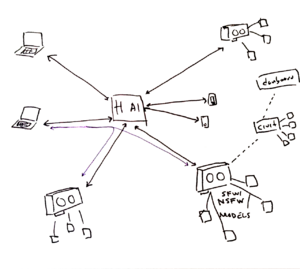
"Why should I use the Horde instead of a free service?
Because when the service is free, you're the product! Other services running on centralized servers have costs—someone has to pay for electricity and infrastructure. The AI Horde is transparent about how these costs are crowdsourced, and there is no need for us to change our model in the future. Other free services are often vague about how they use your data or explicitly state that your data is the product. Such services may eventually monetize through ads or data brokering. If you're comfortable with that, feel free to use them. Finally, many of these services do not provide free REST APIs. If you need to integrate with them, you must use a browser interface to see the ads."[4]
Projects like this one show that there is an explicit interest in alternatives to the mainstream generative AI landscape, based on collaboration strategies rather than a surveillance/monetisation model, also known as "surveillance capitalism", an extractive model that has become the economic standard of many digital technologies (in many cases with the full support of democratic institutions).[5] In this sense, Horde AI is a project that deviates towards a form of technical collaboration, producing its own models of exchange in the form of kudos currency, which resembles a barter system, where the main material is GPU processing power.
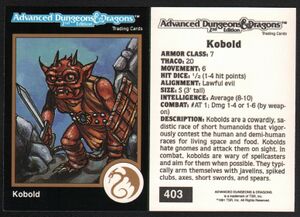
But perhaps more importantly, Horde AI not only shows the necessity and the role of alternative actors and processes in the AI ecosystem, but also the importance of the cultural upbringings of the more wild AI landscape. In a similar fashion to the manga and anime background of the CivitAI population, AI horde is a project that evolved from groups interested in role-playing. The name horde reflects this imprinting, and the protocol comes from a previous project named "KoboldAI", in reference to the Kobold monster from the role-playin game Advanced Dungeons & Dragons. The material infrastructure of the GPU overlaps with a plethora of cultural layers, all with their own politics of value, collaboration, and ethics, influencing alternative imaginaries of autonomy. And much of the aspects of the recursive publics in this landscape are technically operationalized through the GPU object.
How did GPUs evolve through time?
The geometry engine
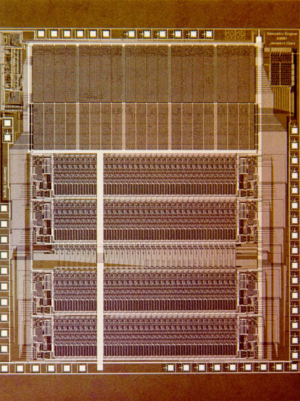
Artist and researcher Ben Gansky asks in a performance project: "Do graphic processing units have politics?" [7] He gracefully narrates 1961's Ivan Sutherland attempt to create an interactive and responsive relation to computers. Together with David Evans, they create a research group specialising in computer graphics. Evans and Sutherlands students would become founders of important digital images organisations like Pixar, Adobe, and Atari, among others.[8] One of these students, James H. Clark became a key piece at Xerox PARC, an innovation hub widely known for the creation of the graphical user interface (GUI), the computer mouse and desktop, electronic paper, and a long etcetera. Clark also pioneered the first GPU, called "the geometry engine" and founded Silicon Graphics Inc or SGI, a company focusing on producing 3D graphics workstations.[9]
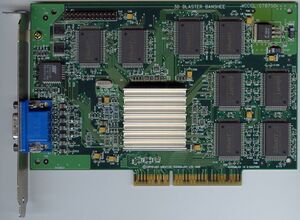
Plenty of companies followed and pushed the development of computer hardware for graphics. The first arcade systems and videogame consoles used ad-hoc hardware and software, eventually producing compatible hardware components known as video cards. The 1990's saw the adoption of real-time 3D graphic cards, such as the popular Voodoo models from 3dfx Interactive. A company that was eventually acquired by Nvidia in the 2000's.
To the moon
The title of Gansky's performance is a reference to Norbert Wiener classic paper "Do artifacts have politics?"[10] Winner asks about the inherent politics of technological implementations and design in the famous example of bridges too short to allow access to public transport, therefore acting as a techno-political device that subtly, but deterministically, controls access to particular demographics in New York city.

During the late 2000s GPUs became an unexpected bridge between computer enthusiasts and alternative economies. The idea of a digital currency detached from banks and other central institutions took shape in the form a of a decentralised protocol, Bitcoin, completely regulated by mathematical calculations. The invention of Bitcon, the first cryptocurrency based on blockchain technology, altered the offer and demand game for GPUs. Suddenly, this object was not only a gaming artefact, but also a calculation machine to 'mine' cryptocurrency, and for some, to become rich in a few years timeline. This made the GPU object not only a device to, technically, create economic value, but also a political means for production outside of the regular economic channels. In between libertarian and rebel economic dreams, the GPU became a bridge for a new imaginary of monetary autonomy.
The prediction engine
The design of the GPU was, although not by design, a also very good fit for the math problems machine learning researchers were facing, in particular for the training of neural networks. Parallel processing made GPUs a perfect candidate for this type of work, and Nvidia released an API in 2007 to allow researchers (as well as game developers) to expand the interaction and programmability of their GPU cards.
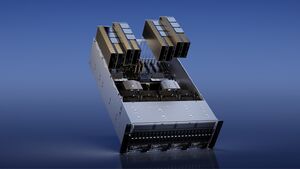
A canonical convolutional neural network for image classification, "alexnet", was trained using 2 GPUs in 2012. This network was co-developed by one of the founders and key figures of OpenAI, Ilya Sutskever, and inaugurated the mainstream use of GPUs for machine learning. Some years later, 10,000 of these objects of interest were used to train GPT-3 using a dataset of 3 trillion words. Its immediate successor, GPT-3.5 would be the first model behind the massively popular chatGPT interface. All major LLMs are trained in massive hubs of GPUs (usually cloud-based), and Nvidia now produces GPUs both aimed at casual and professional gamers, as well as the industrial AI market. Its A- and H-series, marketed towards cloud and datacentres for AI development and training, feed the current demand in the extended AI industry.
Today, the GPU is very much an object of necessity in the AI landscape. Governments, companies, and every institution that attempts to incorporate or participate in this technology requires access to GPUs in one form or another. The GPU, however, remains an object brought by distinct cultural needs, politics, and curiosity.
[1] Adil Lheureux, “A Complete Anatomy of a Graphics Card: Case Study of the NVIDIA A100,” Paperspace Blog, 2022, https://blog.paperspace.com/a-complete-anatomy-of-a-graphics-card-case-study-of-the-nvidia-a100/ .
[2] David Hogan, “Denmark Launches Leading Sovereign AI Supercomputer to Solve Scientific Challenges With Social Impact,” NVIDIA Blog, October 23, 2024, https://blogs.nvidia.com/blog/denmark-sovereign-ai-supercomputer/ .
[3] Design Life-Cycle, accessed August 18, 2025, http://www.designlife-cycle.com/.
[4] AI Horde, “Frequently Asked Questions,” accessed August 18, 2025, https://aihorde.net/faq.
[5] Shoshana Zuboff, “Surveillance Capitalism or Democracy? The Death Match of Institutional Orders and the Politics of Knowledge in Our Information Civilization,” Organization Theory 3, no. 3 (2022): 26317877221129290, https://doi.org/10.1177/26317877221129290.
[6] Kobold TSR card, accessed August 18, 2025. https://www.bonanza.com/listings/1991-TSR-AD-D-Gold-Border-Fantasy-Art-Card-403-Dungeons-Dragons-Kobold-Monster/1756878302?search_term_id=202743485
[7] Ben Gansky (director), Do Graphics Processing Units Have Politics?, video recording, December 15, 2022, https://www.youtube.com/watch?v=pK_mHfpug8I.
[8] Jacob Gaboury, Image Objects: An Archaeology of Computer Graphics (Cambridge, MA: The MIT Press, 2021), https://doi.org/10.7551/mitpress/11077.001.0001.
[8] J. H. Clark, “The Geometry Engine: A VLSI Geometry System for Graphics,” SIGGRAPH Computer Graphics16, no. 3 (1982): 127–133, https://doi.org/10.1145/965145.801272.
[10] Langdon Winner, “Do Artifacts Have Politics?” Daedalus 109, no. 1 (1980): 121–136.
[11] The Geometry Engine of James H. Clark (Wikimedia commons), accessed August 20, 2025.
[12] 3D blaster (voodoo) banshee graphic card (Wikimedia commons), accessed August 20, 2025. https://en.wikipedia.org/wiki/3dfx
[13] Bitcoin mining farm (Wikimedia commons), accessed August 20, 2025. https://en.wikipedia.org/wiki/Bitcoin
[14] NVIDIA, NVIDIA H100 Tensor Core GPU, accessed August 18, 2025, https://www.nvidia.com/en-us/data-center/h100/.
Guestbook